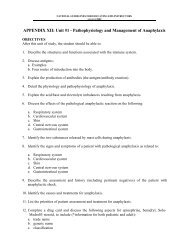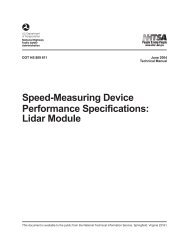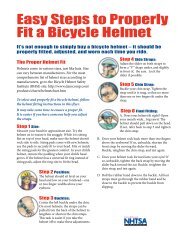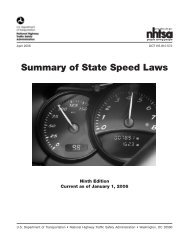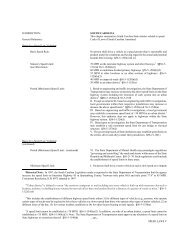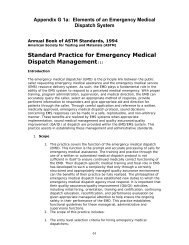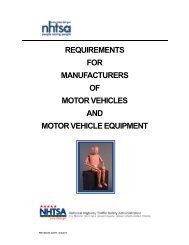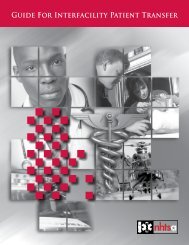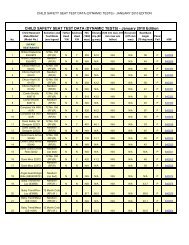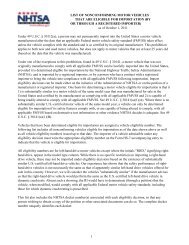Memorandum - NHTSA
Memorandum - NHTSA
Memorandum - NHTSA
Create successful ePaper yourself
Turn your PDF publications into a flip-book with our unique Google optimized e-Paper software.
Performance Requirements<br />
1. Threshold Warning Signal (S6.1)3<br />
rv-3<br />
This requirement is designed to warn deboarding lift users, at the lift door, that the lift platfonil is<br />
not at vehicle floor level. Located on the floor of the transit or paratransit bus at the lift door<br />
opening, the platform threshold area is 457 mm (18 in.) deep measured from the edge of the li it<br />
door and as wide as the lift door. Except in cases where the platform is loaded over the vehicl,:<br />
floor such as with a personal rotary lift, a visual or audible warning is to activate: (1) if portions<br />
of a passenger’s body or mobility aid is on the “platform threshold area” and (2) if the lift<br />
platform is more than 25 mm (1”) below the “floor reference plane”. Once a warning signal is<br />
activated, it must continue to operate until the “platform threshold area” is vacated, or the lift i!;<br />
returned to the vehicle floor level. (See Figure IV-1)<br />
If a visual warning is used to comply (S5.1.l), it is to consist of a flashing red beacon with 20<br />
candela (minimum) power and be visible to a wheelchair user backing onto the lift. The flash<br />
rate specified by (S6.1.4) is between 1 to 2 Hz. Typically, the warning light would be located<br />
inside the bus or MPV inside the lift door opening. The warning beacon accommodates heariiig<br />
impaired and deaf pedestrians standing near the lift. The red beacon’s intensity is to be measur,:d<br />
914 mm (3’) above the centroid of the platform threshold area as shown in Figure IV-1.<br />
The alpha-numeric in parentheses refers to the pertinent section of the regulatory text



